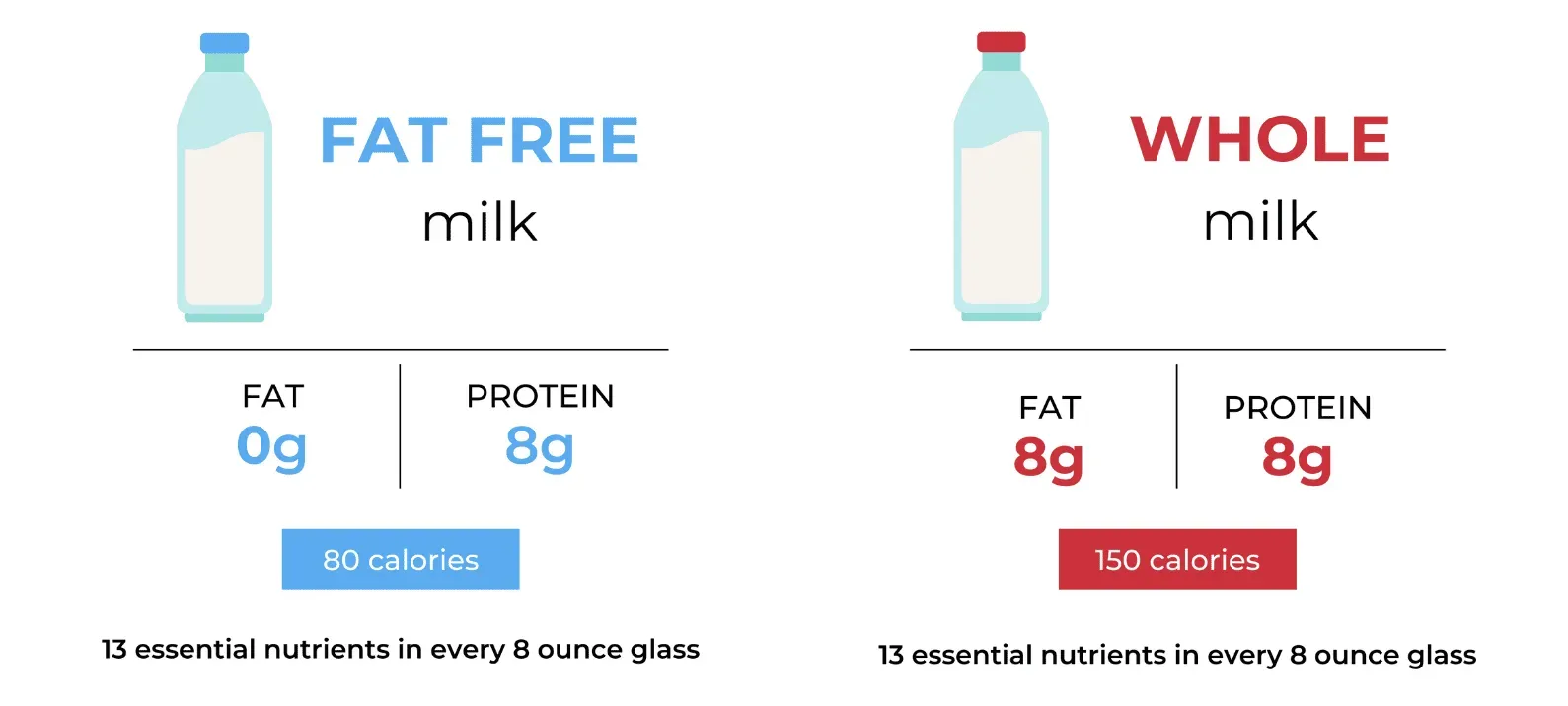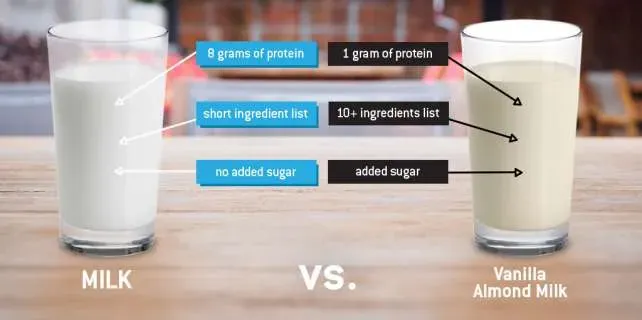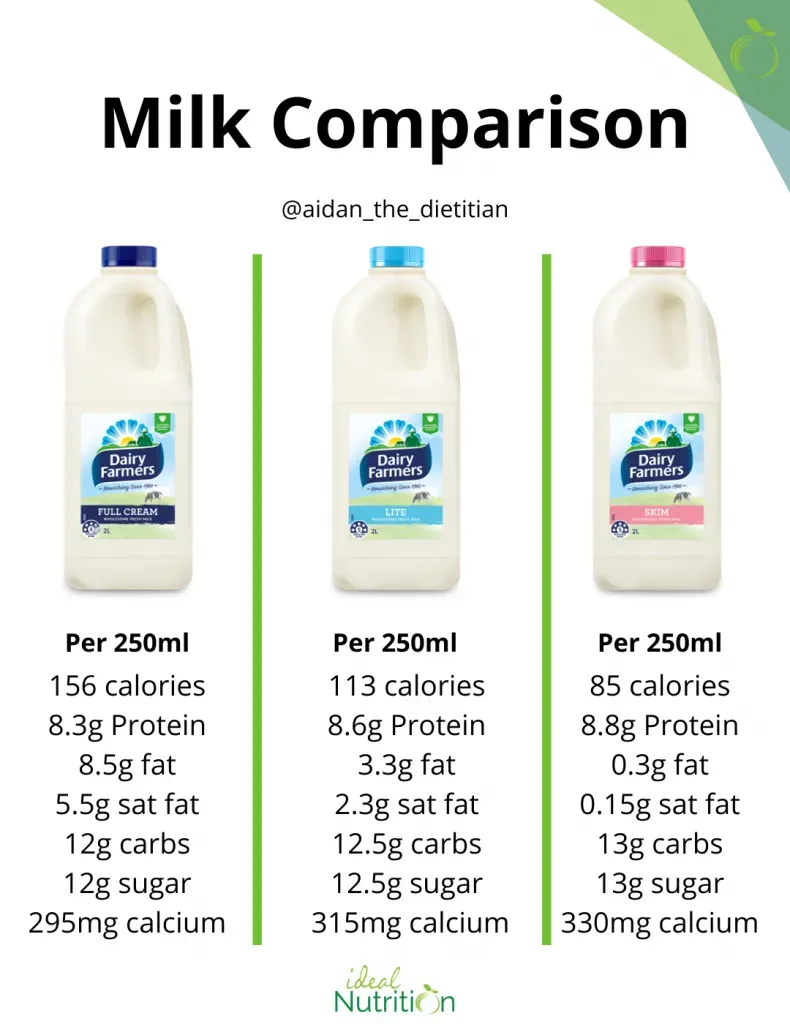Table of Contents
For years, we've been told to ditch full-fat dairy and reach for the low-fat or skim options. It was simple: fat is bad, less fat is good, end of story. But walk down the dairy aisle today, and that old advice feels… sticky. Suddenly, there's chatter, whispers even, suggesting maybe, just maybe, whole milk isn't the villain it was made out to be. This leaves a lot of people scratching their heads, wondering, honestly, is whole milk better than low fat?
Is Whole Milk Better Than Low Fat? The Fat Debate

Is Whole Milk Better Than Low Fat? The Fat Debate
The Legacy of Low Fat
For decades, the message was loud and clear: fat is the enemy, especially saturated fat found in things like milk. The prevailing dietary wisdom pushed us towards low-fat everything, including dairy. Skim milk, essentially colored water with nutrients, became the poster child for healthy hydration. Whole milk, with its creamy texture and higher fat percentage, was relegated to the "sometimes" list, if not the "never" list. This push was based on the idea that saturated fat clogged arteries and directly led to heart disease. It felt like settled science, a simple equation where less fat equaled a healthier heart. We dutifully poured the watery stuff, often missing the richness but believing we were doing the right thing.
Breaking Down the Milk Fat Numbers
So, what are we actually talking about when we say "fat content" in milk? It's measured by percentage of milk fat. Whole milk typically clocks in around 3.25% milk fat. This might not sound like much, but compared to the alternatives, it's a significant difference. Low-fat milk, often labeled 1% or 2%, contains – surprise! – 1% or 2% milk fat, respectively. Skim milk, or non-fat milk, has less than 0.5% milk fat. That difference in percentage translates directly to calories and the presence of fat-soluble vitamins within the milk itself. The fat in milk is primarily saturated, which is precisely why it got such a bad rap for so long.
Milk Type | Approximate Milk Fat Percentage |
|---|---|
Whole Milk | 3.25% |
2% (Reduced Fat) | 2% |
1% (Low Fat) | 1% |
Skim/Non-Fat | Less than 0.5% |
Challenging the Old Rules
Here's where the conversation gets interesting and the old advice starts to look a little shaky. Recent research has begun to question the direct link between saturated fat intake, particularly from dairy, and heart disease. It turns out the picture is far more complex than just "saturated fat bad, unsaturated fat good." Some studies suggest that the saturated fat matrix within whole milk might behave differently in the body than saturated fat from other sources. There's even talk that the fat in whole milk might help you feel fuller, potentially aiding in weight management, which flies directly in the face of the original low-fat push. The debate around whether is whole milk better than low fat is heating up because the science isn't nearly as black and white as we were led to believe.
Beyond the Fat: What Else is in Your Milk?

Beyond the Fat: What Else is in Your Milk?
More Than Just Fat and Water
so we've chewed over the fat thing. But milk isn't just about fat content, is it? Absolutely not. Regardless of whether you grab whole, 2%, 1%, or skim, you're still getting a solid dose of important nutrients. Think of milk as a package deal. You're getting high-quality protein, essential for building and repairing tissues. You're also getting calcium and phosphorus, the dynamic duo for strong bones and teeth. And let's not forget Vitamin D, which helps your body actually absorb that calcium. These nutritional powerhouses are present in pretty similar amounts across all types of cow's milk, which is a point often lost in the "fat is bad" narrative.
Vitamins and Minerals Beyond the Big Names
Digging a little deeper, milk also brings other goodies to the table. You'll find a range of B vitamins, like riboflavin (B2) and cobalamin (B12), crucial for energy metabolism and nerve function. Potassium is there too, important for maintaining healthy blood pressure. While some fat-soluble vitamins, like A and D, are naturally present in the fat and thus higher in whole milk, many milk producers add these back into lower-fat versions through fortification. So, while whole milk has them naturally in its fat, you're generally not missing out on these key vitamins if you choose a fortified lower-fat option. The core micronutrient profile is surprisingly consistent.
What exactly are these key nutrients we're talking about?
- Protein (High-quality, complete protein)
- Calcium (Essential for bone health)
- Vitamin D (Often added, helps calcium absorption)
- Phosphorus (Works with calcium for bones)
- Riboflavin (Vitamin B2)
- Cobalamin (Vitamin B12)
- Potassium (Supports healthy blood pressure)
The Science Weighs In: Is Whole Milk Better Than Low Fat for Your Health?

The Science Weighs In: Is Whole Milk Better Than Low Fat for Your Health?
Challenging the Heart Disease Narrative
Remember how we were told saturated fat would clog our arteries faster than a bad internet connection? Well, science has gotten a bit more nuanced. The old idea was simple: saturated fat raises LDL ("bad") cholesterol, and high LDL cholesterol leads to heart disease. Case closed. But recent large-scale studies and meta-analyses haven't found the strong, direct link between *dairy* fat consumption and increased risk of heart attack or stroke that was once assumed. It seems the matrix of nutrients in milk – the calcium, protein, and other fats – might interact in ways we didn't fully understand. Some research even suggests that certain fatty acids in dairy could be beneficial. The question of is whole milk better than low fat for heart health is far from settled, and the evidence isn't screaming "avoid whole milk" like it used to.
Whole Milk and Other Health Outcomes: Weight and Diabetes
Here's another curveball: some studies indicate that people who consume full-fat dairy products tend to have a lower risk of obesity and type 2 diabetes compared to those who stick to low-fat versions. Counterintuitive, right? The thinking goes that the fat in whole milk helps you feel more satisfied after drinking it, potentially leading you to eat less overall. It might also influence hormone responses related to appetite and metabolism. While correlation doesn't equal causation, these findings certainly challenge the long-held assumption that ditching fat is always the best path for weight management or metabolic health. It makes you wonder if the relentless focus on cutting fat might have missed some potential benefits that whole milk offers.
So, what are some of these newer findings hinting at?
- Dairy fat might not be as strongly linked to heart disease as previously thought.
- Consumption of full-fat dairy could be associated with a lower risk of obesity.
- Some studies suggest a link between full-fat dairy and reduced risk of type 2 diabetes.
- The complex nutrient profile of milk likely plays a role beyond just the fat content.
Choosing Your Milk: When Is Whole Milk Better Than Low Fat?

Choosing Your Milk: When Is Whole Milk Better Than Low Fat?
Considering Your Personal Health Landscape
so we’ve waded through the fat and the science. Now comes the million-dollar question: for *you*, is whole milk better than low fat? The truth is, there's no single, universal answer. It depends entirely on your individual health needs, your dietary patterns, and what you're trying to achieve with your diet. Are you managing a specific medical condition that requires strict fat limitation? Are you trying to gain weight, maintain weight, or lose weight? Do you have specific nutrient deficiencies? Your personal health landscape dictates the best choice. A registered dietitian or your doctor can offer tailored advice, which is always the smart move before making big dietary shifts.
Think about it like this:
- **For Growing Kids:** Many experts still recommend whole milk for toddlers (ages 1-2) because they need the extra fat for brain development.
- **For Weight Management (Maybe):** The theory that whole milk's fat helps with satiety and potentially weight management might resonate if you find lower-fat options leave you hungry.
- **For Nutrient Absorption:** Some vitamins (A, D, E, K) need fat to be absorbed properly. Whole milk naturally provides this fat vehicle.
When Creaminess and Calories Matter
Sometimes, the choice isn't just about macro or micronutrients; it's about practical considerations and how the milk fits into your daily calorie budget. Whole milk is undeniably richer and creamier. If you enjoy the taste and texture, and it helps you meet your nutrient needs without pushing you over your calorie limit, then it could be a perfectly fine choice. For someone with higher calorie needs, perhaps an athlete or someone trying to gain weight, the extra calories and fat in whole milk are a straightforward benefit. It's a simple way to add energy density to your diet without drinking gallons. This is where asking "is whole milk better than low fat" becomes less about a moral judgment on fat and more about caloric efficiency and enjoyment.
Situations Where Low-Fat Might Still Be King
Despite the shifting narrative, there are still valid reasons to opt for low-fat or skim milk. If you are on a very strict calorie-restricted diet, every calorie counts. Skim milk offers protein, calcium, and other nutrients with minimal calories and virtually no fat. For individuals with certain digestive issues or conditions that require very low fat intake, skim or low-fat milk remains the recommended option. It's also a way to get milk's nutrient package without adding significant dietary fat if you're getting plenty from other sources like avocados, nuts, and olive oil. The lower-fat versions aren't nutrient-empty; they just change the fat and calorie equation.
Making Your Pick: Whole Milk, LowFat, or Somewhere In Between?

Making Your Pick: Whole Milk, LowFat, or Somewhere In Between?
so after wading through the fat percentages, the vitamin lists, and the ever-evolving science, where does that leave us on the great milk debate? The simple, slightly annoying truth is, there's no single milk carton that's universally "better." For some, especially growing kids needing those extra calories and fat for development, whole milk makes sense. If you find that a glass of whole milk keeps you feeling full longer, potentially helping you manage your overall food intake, then maybe the slightly higher fat content is a feature, not a bug. On the flip side, if you're closely monitoring calories, or if a medical condition necessitates minimizing fat intake, then skim or low-fat milk remains a perfectly reasonable choice, still delivering that crucial protein and calcium package. The key isn't finding a magic milk; it's figuring out which one fits your individual needs, dietary goals, and yes, even your taste preferences without getting hung up on outdated dogma about whether is whole milk better than low fat across the board.
So, Is Whole Milk Really Better Than Low Fat?
After wading through the fat percentages, the nutrient breakdowns, and the shifting sands of dietary advice, the simple answer to "is whole milk better than low fat" remains frustratingly complex: it depends. The rigid decree to avoid whole milk based solely on saturated fat is looking increasingly shaky in light of newer studies linking full-fat dairy to potential benefits for weight and metabolic health in some people. Whole milk brings more calories and fat to the table, which isn't a free pass for everyone, especially those managing strict calorie limits. Low-fat and skim still offer a nutrient punch with fewer calories. Ultimately, the "better" milk isn't a universal truth etched in stone; it's a personal calculation based on your overall diet, health goals, and how your body responds. Don't just blindly follow old rules or new trends; consider the evidence and what makes sense for your own glass.
